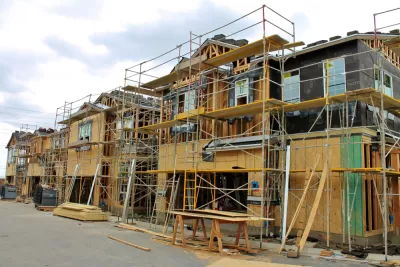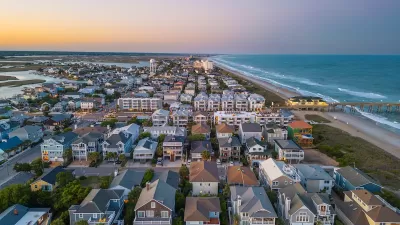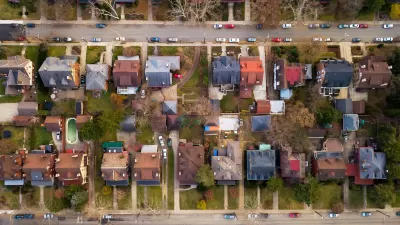Governor Newsom's new budget proposes incentives for developers to build housing in existing urban areas away from fire-prone zones to reduce fire risk and add to the state's insufficient housing stock.

A $2-billion package of grants and tax credits proposed in California Governor Newsom's budget would incentivize development in urban cores and steer housing construction away from areas facing high fire risks. The governor called it an effort to move development away from the "urban-wildland interface" where communities are routinely affected by California's increasingly destructive fires.
According to an article by Hannah Wiley, "The proposal would build on the $10.3 billion state officials allotted last year to bolster mixed- and low-income housing in California, but marks an evolution in the governor’s approach to solving the state’s multimillion-unit shortage" by specifically supporting infill housing projects in already developed areas.
The governor's top housing advisor said of the proposal "better for equity, it’s better for inclusion, it’s better for the environment." The Governor hopes the new language will encourage transit-oriented development and ease the cost and administrative burden of development on underused urban land and state-owned land that could be used for affordable housing, as well as reduce the cost of adaptive reuse that converts buildings to residential use.
The plan would reduce the encroachment of residential development into fire-prone areas and ease pressures on the state's mounting housing crisis by providing more incentives for dense, transit-oriented, affordable housing development.
FULL STORY: Newsom’s latest housing fix: More Californians living downtown

Study: Maui’s Plan to Convert Vacation Rentals to Long-Term Housing Could Cause Nearly $1 Billion Economic Loss
The plan would reduce visitor accommodation by 25,% resulting in 1,900 jobs lost.

North Texas Transit Leaders Tout Benefits of TOD for Growing Region
At a summit focused on transit-oriented development, policymakers discussed how North Texas’ expanded light rail system can serve as a tool for economic growth.

Why Should We Subsidize Public Transportation?
Many public transit agencies face financial stress due to rising costs, declining fare revenue, and declining subsidies. Transit advocates must provide a strong business case for increasing public transit funding.

How to Make US Trains Faster
Changes to boarding platforms and a switch to electric trains could improve U.S. passenger rail service without the added cost of high-speed rail.

Columbia’s Revitalized ‘Loop’ Is a Hub for Local Entrepreneurs
A focus on small businesses is helping a commercial corridor in Columbia, Missouri thrive.

Invasive Insect Threatens Minnesota’s Ash Forests
The Emerald Ash Borer is a rapidly spreading invasive pest threatening Minnesota’s ash trees, and homeowners are encouraged to plant diverse replacement species, avoid moving ash firewood, and monitor for signs of infestation.
Urban Design for Planners 1: Software Tools
This six-course series explores essential urban design concepts using open source software and equips planners with the tools they need to participate fully in the urban design process.
Planning for Universal Design
Learn the tools for implementing Universal Design in planning regulations.
City of Santa Clarita
Ascent Environmental
Institute for Housing and Urban Development Studies (IHS)
City of Grandview
Harvard GSD Executive Education
Toledo-Lucas County Plan Commissions
Salt Lake City
NYU Wagner Graduate School of Public Service





























